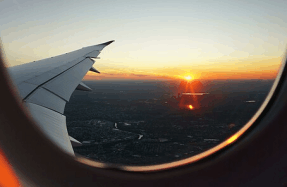On Beauty and Violence
 Christoffel Puytlinck, Still life with meat and dead birds, ca. 1660 – 1671, oil on canvas. Amsterdam, Rijksmuseum.
Christoffel Puytlinck, Still life with meat and dead birds, ca. 1660 – 1671, oil on canvas. Amsterdam, Rijksmuseum. As a child, violence was a geography I could visualize: a slab of earth in the Minnesotan suburbs, with a rock garden and two pink azaleas, a geography from which I could flee. It spanned to the neighbor’s forked metal fence, whose sharp black tines one day unzipped the belly of a doe that hadn’t leapt quite high enough. Speared and suspended, she bleated pathetically in the pale blue light. Dew and blood beaded the grass. Her organs, bright skeins of pink and maroon, had slipped out and into a pile on the property line. I was still young when we found her. My father and I stood on one side, our neighbor on the other. There was nothing to do but watch. After some time the last bit of fight went out of her, the soft curve of her neck slackened, and her head fell forward in death. The two men lifted her corpse off the spike and moved it onto the ground. I watched as my father dragged the doe by the legs through our yard, down towards the woodshed where the cottonwood stood. It was the neighbor’s fence, but it was my father’s land, his body to handle.
I can’t remember if we ate her, but knowing my father I am certain we did.
For years she returned to me often. Time passed and my memory narrowed, the details reduced to a retinal flash: woolen cord of intestine, red-pink clot on the ground, blood ribboning from the mouth. Her image joined a growing collection of things I had observed from within the bounds of our property. There was my father and his fits. The punishments in the basement and an unexplained hole in the wall. There were the afternoons he spent blowing off steam from the porch, angling his rifle at the spined boughs of the Colorado blue spruce, shooting perched crows down to the ground. The coyotes, the squirrels. Corpses of animals studding the yard. And then there was the rare vein of tenderness, how my father — whenever he shot a pheasant or turkey — would preserve their severed wings in white layers of Borax, serving them to me as gifts. In lieu of toys, my closet filled with these tokens of violence: an antler, rodent bones, feathers and wings, and in a small paper bag crimped at the top, a lone cobbled talon curled to a fist.
After a childhood spent observing my father’s moods, I had come to believe something fixed about violence: that fury alone was its precursor. I had grown too familiar with his penchant for threats, the flash of a flat palm contacting a wall. His footfall, like thunder, moving over the floor.
Although once in a while the doe came to mind, and I found myself pausing. I would consider the wings in my closet, the bones in brown bags. The rough contours of a contradiction emerging, yet to be
You’re reading a preview, subscribe to read more.
Start your free 30 days





